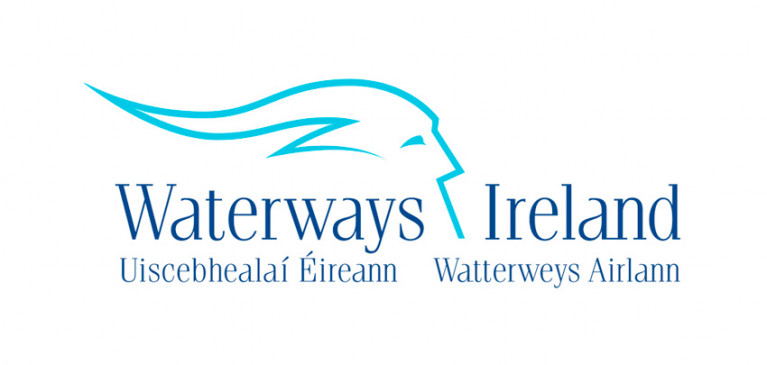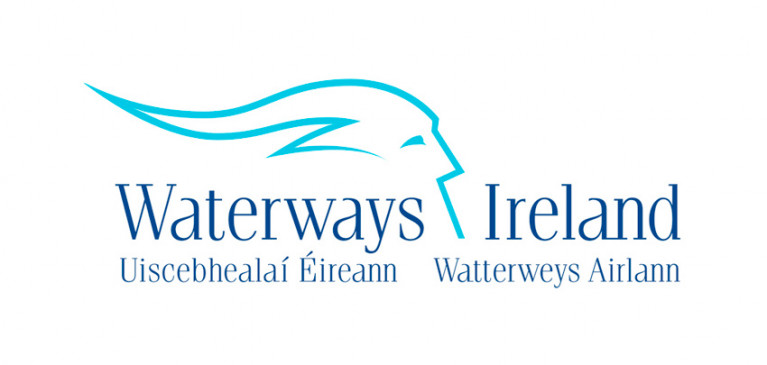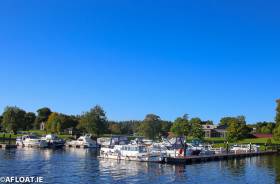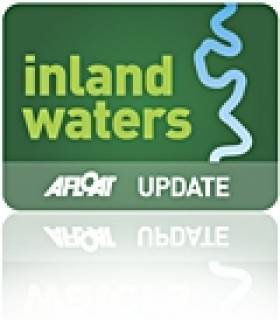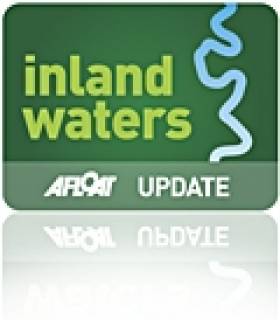Displaying items by tag: ShannonErne Waterway
Waterways Ireland advises all masters of vessels and water users that the flood levels are receding on the Shannon, Erne, Barrow and Lower Bann inland waterways.
Operations staff are now preparing the jetties, quays, slipways and facilities for reactivation as the floods recede.
It is anticipated that it will take up to three weeks for all jetties, quays, slipways and facilities to be fully operational.
Masters of vessels and water users should be aware that surfaces may be slippery, access to jetties can be difficult as gangways and pontoons are elevated, and flood damage may be encountered in some locations.
All should proceed with additional caution while the clean-up work is ongoing.
Closures On Shannon-Erne Waterway For New Footbridge & Service Block
Waterways Ireland advises masters and owners of vessels that the Shannon-Erne Waterway will be closed between Lock 12 and Lock 13 today, Tuesday 18 February, in order to facilitate the installation of a new footbridge.
It is estimated that the closure of the navigation shall be for no more than one day.
In addition, the service block and amenity area including jetties at Keshcarrigan, Co Leitrim shall remain closed to the public until 16 March in order to facilitate improvement works.
For further information contact, Waterways Ireland’s Carrick-on-Shannon office at 07196-50562.
Waterways Ireland advise masters that the winter mooring period for public harbours on the navigations will commence on 1 Nov 2019 and will end on 31 Mar 2020.
Masters wishing to avail of Winter Mooring are required to pay the winter mooring fee of €63.50 prior to 1 Nov 2019.
Masters are reminded that Bye-law 17 - the “5 consecutive days / 7 days in one month rule” - continues to apply for masters not availing of winter mooring.
Owners are also asked to note that vessels berthed in public harbours are at the owner's risk at all times and may be directed to other harbours as operational exigencies require.
Online registration for winter berths must be made here
Steps in the Winter Mooring process are:
- Apply online for Winter Mooring at a specific harbour
- Receive email approval / rejection / alternative location of application
- Follow link on approval email when received to pay winter mooring fee online
Revised Opening Hours For Shannon-Erne Waterway In 2018
#InlandWaters - Waterways Ireland has announced revised opening hours for the locks on the Shannon-Erne Waterway for 2018.
From next Thursday 29 March to Wednesday 16 May, locks will open from 9am to 6pm daily, extending to the full summer season opening hours of 9am to 8pm from Thursday 17 May till Wednesday 12 September.
In the late season, daily openings of 9am to 6pm are set for Thursday 12 September till Wednesday 31 October, dates and times to be confirmed. Winter hours will be advised towards the end of the season.
These changes apply seven days a week. The changes in operating hours will be seen in the early and late shoulder seasons only, and reflect usage patterns recorded by Waterways Ireland.
Throughout the season a minimum of two water patrollers will be working along the waterway to ensure that customer services can be provided as swiftly as possible.
For more information contact the SEW Operations Team in Carrick-on-Shannon at 071 965 0642.
#ShannonErne - Waterways Ireland welcomed Canadian Ambassador Loyola Hearn and his wife Maureen to celebrate the 20th anniversary of the opening of the Shannon-Erne Waterway earlier this month.
The ambassador arrived in Leitrim village on a Waterways Ireland boat, and after meeting with representatives from Inland Fisheries Ireland and the Inland Waterways Association of Ireland at the local marina, he planted a maple tree as a symbol of strength and endurance in Canada.
Waterways Ireland chief executive Dawn Livingstone led the ambassador on a visit to Glenview Folk Museum alongside Lock 5 of the waterway, after which he visited Riversdale Barges, where he took in a barge building project with owner Graham Thomas.
On a traditional barge, the ambassador and his party travelled on to Ballinamore where they were met at the community marina by Sadie McGovern of Ballinamore Development Association, Locaboat hire boat company manager Phillipe Ducont and children from three local schools.
Ambassador Hearn was joined by Livingstone in presenting certificates to St Brigids National School in Drumcong and Scoil Brid and St Patrick's National Schools in Ballinamore for their work on the Waterways Ireland Education Programme.
Canada was a major contributor to the International Fund for Ireland that covered the costs of the Shannon-Erne Waterway, which opened in 1994 as the first corss-border waterway project in Ireland.
In related news, Waterways Ireland is now selling a Navigational Guide to the Shannon and Erne Waterways, a comprehensive A3 booklet with section-by-section guides complete with drawings, photos, instructions and navigation tips.
The new guide is available from the Waterways Ireland online shop for €15.
Lock One Repairs Complete On Shannon-Erne Waterway
#InlandWaterways - Waterways Ireland advises masters and owners of vessels that repairs to the lock and gates at Lock 1 Corraquill on the Shannon-Erne Waterway in Co Fermanagh which began on 29 January have now been completed.



























